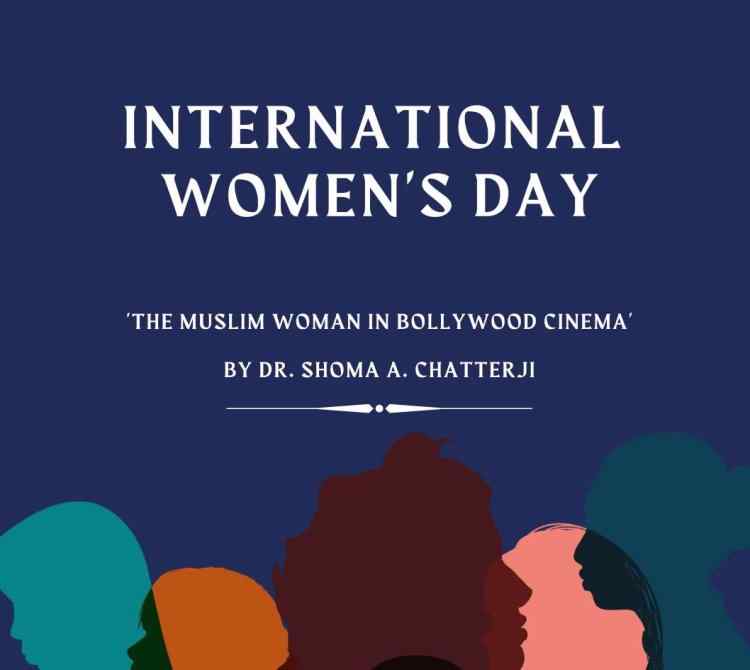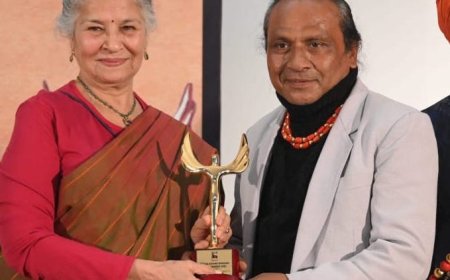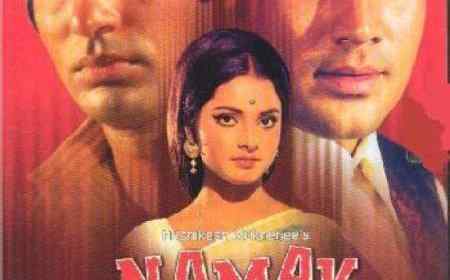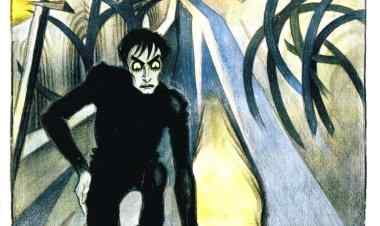THE MUSLIM WOMAN IN BOLLYWOOD CINEMA
Dr. Shoma A. Chatterji writes on the Muslim woman in Bollywood cinema on the occasion of International Women’s Day

Bollywood films are made with male gaze in view; the images of women are discussed sociologically or semiotically or as subservience. In such circumstances when a Muslim woman is projected, she is doubly marginalized. First, as a woman, and second, as a representative of minority community. But this stereotypical images were broken by Hindi films like Nikaah (marriage) in 1982, Bazaar (market) in 1982, Bombay in 1994 and Fiza (atmosphere) in 2003. In these films the female protagonists enjoy key positions and try to break out of socio-environmental forces controlled by men. These films also raise questions on gender issues and the process of questioning occurs at multiple levels through characterization and narrative modes. Here, the characters of Muslim women are not treated in an abstract manner; in fact, the basic projection centers on the need to be accepted and respected individually towards self-definition.[1]
There was a time when Hindi cinema created a Muslim ethos in a given category of films that came to be labelled “Muslim Socials.” Historical films such as Pukar, Mughal-e-Azam, Anarkali, Laila-Majnu were fictionalised slices of history glamorised to pull in the mass audience! Muslim socials were almost always box office hits such as Chaudhvin Ka Chand and Mere Mehboob. Then there were the Muslim tawaif genre films like Pakeeza, Umrao Jaan, Benazir, etc. These films were aimed purely to entertain, to trigger the tear ducts to flow freely and for the mass audience to hum the tunes of the lovely songs and go home happy.
The Muslim Social is defined as a genre within the Hindi mainstream as narratives that portray but rarely critique the Muslim identity within partitioned India. It flourished in the 1950s and 1960s and lasted till the early 1980s. The women in these films were exquisitely beautiful, their beauty enhanced and enriched by the elaborate costumes and jewellery and heavy make-up with emphasis on the eyes, the eyelashes and the lips.
Early representations of the Muslim woman were seen in films like RS Choudhury’s Anarkali (1928), Noorjehan (1923, Madan Theatres), Humayun by Mehboob Khan (1945), and Shahjahan by A R Kardar (1946). This trend continued into the 1950s with films like Baiju Bawra by Vijay Bhatt (1952), Mumtaz Mahal and Nandlal Jaswantlal’s Anarkali (1953). But all these films were fictionalised representations from Islamic history wrapped in glamour, chutzpah and enriching music and songs. The woman was the focus mainly for her exquisite beauty. Mehboob’s Elan (1947) was banned. It appeared to be a harmless kind of rich man-poor man fable. But at the heart of it, there was a kind of message of “Islamic socialism” that offended the authorities. A Muslim social which spoke of romance and heartbreak did not threaten the status quo. A film which spoke of change did. The tone reappeared decades later in a Muslim film Coolie (1983.
B.R. Chopra’s Nikaah (1982) arrived and changed the cultural map of the Muslim social for all time to come. The earlier “Muslim Social” came to be classified, a bit ambiguously however, into two classes – the “Classic Muslim Social” that described the nawabi and Badshahi culture mapping the luxurious lives of the aristocratic class settled mainly in Lucknow and old Delhi and the “New Wave Muslim Social” that portray the metamorphosis in the lives of middle class and low middle class Muslim families caught within the trap of the ghetto that divides them from the elite Muslim families on the one hand and the Hindu majority on the other.
Between these two genres arrived the Hindu-Muslim-schism films depicting conflict between the majority and the minority, the invasion of terrorists and terror-ridden activities of the minority community and its reflection on celluloid based sometimes on real events but mostly fictionalised enough to ring true and pull in the audience. The two turning-point films considered milestones in the history of the Muslim in Indian cinema are Nikaah directed by B.R. Chopra and M.S. Sathyu’s Garm Hawa. In two different ways, these two films, one mainstream and a box office hit and the other an off-mainstream focusing on the tragedy of the Muslim who refuses to go over to Pakistan after the Partition laid down the foundation stone for significant films portraying the tragedy of being a Muslim – man and woman.
In the late Eighties and early Nineties, several films within the Mumbai mainstream began showing Muslims as villainous characters in films like Tezaab (1988) directed by N. Chandra, Gardish (1993) directed by Priyadarshan and Angaar (1993) directed by Shashilal Nayar.[ii] The women were not really fleshed out enough to reflect reality in society.
Mani Ratnam’s Bombay defines one of the best examples of contemporary communal violence portrayed on celluloid. Beginning with the usual Hindu boy-Muslim girl love story, strongly opposed by both families, the narrative builds up slowly to lead to communal violence. The film represents the communal violence that shook the country beginning with the destruction of the Babri Masjid on December 6, 1992 going on till it leads to riots in Mumbai beginning on January 6, 1993.
Lipstick Under My Burkha
Produced by Prakash Jha and directed by Alankrita Srivastava this film is a powerful political statement on how women can strategically use two extremely polarised items of women’s use - the lipstick and the burkha to express and articulate their undiluted sexual desires, irrespective of caste, class, age, community, faith and social status. This film without embarrassment or apology, explores not only the woman’s sexuality but also the ingenuous and devious ways women invent to fulfil their sexual and other desires clandestinely, using the veil to their advantage and the lipstick for their satisfaction as and when they like to and not because they are forced to. Two out of four of these women are Muslim. One is married and one is a college girl. They wear the burkha, the first to go out to work and the younger girl to visit college. But for both, the burkha is used diabolically as a ‘disguise’ to live the way they want to. The college girl drops her black robe the minute she steps into the washroom of the college. We find her wearing jeans and tees underneath and she dabs on a dash of bright red lipstick that magically changes her personality. She also shoplifts expensive things from a shopping mall and is not caught because of her burkha. The housewife who is raped brutally and also bashed up by her husband who “works abroad” wears it to choose a sales career for herself and excels at her job without her husband’s knowledge.
Alankrita Srivastava makes no bones about making her film one of the most outstanding social satires cloaked with a generous dose of sex in different forms emanating from the four women. Buaji, a Hindu widow has so deeply internalised her collective identity that she has to think before she can recollect her original name, Usha Parmar. She fancies the bicep-revealing male eye-candy at the swimming pool and begins a secret telephonic conversation with him calling herself Rosy. The macho young man with more brawn than brains takes the female voice to be one of his shapely young female pupils in the swimming pool.
Lipstick Under My Burkha uses both the lipstick and the burkha in their physical and social identities and also as metaphors of freedom and self-expression without being caught. The film shows Buaji dyeing her hair in a parlour and under the ‘safety’ of the burkha, applying lipstick and thrilled in the joy of feeling ‘free’ to be attracted to a young man and to want to look young and beautiful with her white hair dyed black and her fading lips gleaming a bright red, thanks to that dab of lipstick!
“Our mistake is that we keep on dreaming and holding on to them,” says a frustrated Leela, (the beautician who blandly expresses her desire for sex) as she puffs on her cigarette while Usha Parmar picks up the shreds of the last three pages of her favourite book Lipstick Dreams and reads out the contents while the other three women listen and laugh away and try to cope with their dreams. The closing scenes remind us of Jafar Panahi’s brilliant The Circle (2000) which bagged several awards, including the Golden Lion at the Venice Film Festival but is banned in Iran.
Based on a true story from the book Calling Sehmat by Lt Commander Harinder Sikka (retd), Raazi is a sterling example in which, under the ‘guise of nationalism and patriotic passion’ that should take prime place in the life of a spy, a very young Sehmat (Alia Bhatt) who has just begun to enjoy her college life, is manipulated into becoming a spy. This is achieved through the careful and shrewd brain-washing by her spy father (Rajit Kapoor) who will soon die of cancer and needs someone to replace him in the intelligence circle of the Indian espionage system. Who better than his own daughter Sehmat? She is taken off her college and placed under an intelligence officer expert in training interns in espionage skills. Therefore, she is not a genuinely committed spy because no one asked her whether she would like to be one. In fact, she was not given the space to refuse. She becomes a pawn in the very intelligent and well-designed plan that includes marriage to the younger son of a top ranking defence officer (Shishir Sharma) in the Pakistani army. In other words, not only is she manipulated into the intelligence department, but her marriage is really a part of the entire espionage strategy. Her ‘commitment to the cause of the country’ therefore, is a product of pure manipulation.
Patriotism in Sehmat’s case, is a political term that controls every aspect of her life and effectively turns her from an innocent, naïve young beauty into a cold, calculating killer. By the time she begins to realise the trap, she cries out to her superiors not to touch her husband but it is just too late. Does she realise the con game her father and his colleagues and her superior have played with her? As the film closes on her in an Indian prison, we see her grown son joining the military in India.
Meghna Gulzar controls her story, the narrative unfolding of the story and her characters in total control and the film never once collapses into melodramatic twists. The cold-blooded manner in which Sehmat gets rid of the old retinue in her in-law’s place is proof of her indoctrination and not of her emotions. Alia Bhatt as Sehmat performs perhaps the most outstanding role of her career in the film as she grows from a beautiful young college girl, the only child of doting parents, to soft-minded intelligence trainee to a hard-boiled spy must be seen to be believed. Raazi reflects a completely different image of a modern Muslim woman torn between her emotions and her manipulation by others who shape her life without her permission.
According to Syed Ali Mujtaba, Muslim characters generally get a raw deal in Hindi films. They are depicted as smugglers, rowdy history sheeters dressed in lungis and sleeveless singlets that run counter to the general appearance of an average Muslim in Indian society. He says that the characterization of most Muslim women as tawaifs and nautch girls with Muslim names twists the image of the Muslim woman. Words like “Pakistan”, “Kashmir” and “The Taliban” are no longer identified with countries or states or reactionary militant groups but as symbols of evil so far as Bollywood cinema is concerned. “Kashmiri militants are shown as gun toting bearded guys wearing skullcaps fighting the Indian security forces. Kashmiri militant's linkages moves in a linear direction to identify with Pakistan and Talibans. Characters dressed in Afghan outfits with a scarf over the shoulder are shown mouthing some Arabic words, scheming to launch Jehad against India,” says Mujtaba.
Bollywood cinema underscores that Indians everywhere can absorb everything – good, bad, ugly and indifferent. Mumbai Meri Jaan brings this alive on celluloid. This is what we saw in real life during those three nightmarish days and nights in Mumbai. Films like Nikaah also prove how powerful and all encompassing a celluloid comment can be.
***
[i] Kumar Parag: Identity of Muslim Women in Indian Movies, European Academic Researcg, Vol I, Issue 6, September 2013.
[ii] Doraiswami, Rashmi: “Narrative Strategies in Popular Indian Cinema”, Cinemaya, 1994.
What's Your Reaction?



































































